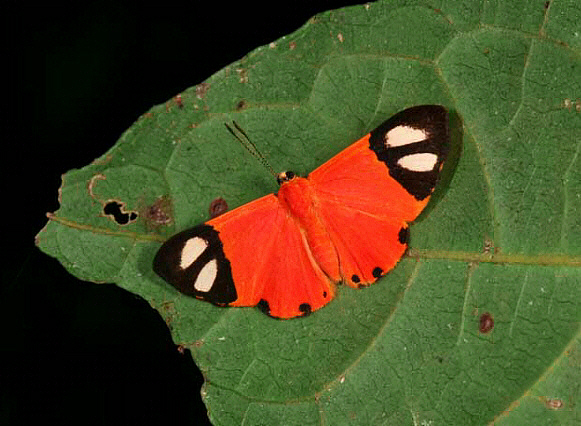 Mesene epaphus pyrrha, Rio Cristalino, Mato Grosso, Brazil – Tony Hoare
Mesene epaphus pyrrha, Rio Cristalino, Mato Grosso, Brazil – Tony Hoare
Introduction
There are 26 species in the genus Mesene. The majority are bright red, with black borders or apical patches, which in some species are marked with white spots. In a few species such as leucopus and silaris the red colour is replaced by bright yellow.
The various Mesene butterflies are considered to be Batesian mimics of noxious moths in the genus Holomelina ( Arctiidae ). Several other moths e.g. Eubaphe and Eudolophasia ( both Geometridae ) also mimic Holomelina. The illustrated subspecies Mesene epaphus pyrrha was in fact discovered by Henry Walter Bates, the legendary 19th century explorer and naturalist who originated the theory of butterfly mimicry which now bears his name – Batesian mimicry.
This species is distributed from Venezuela to southern Brazil.
Habitats
Mesene epaphus is found in primary rainforest at altitudes between sea level and about 800m.
Lifecycle
The larvae are pale green with short white setae, and a prominent dorsal crest of very long white setae. The feed on Inga ( Fabaceae ) and possibly also on Sapindaceae.
Adult behaviour
The adults are very elusive and usually encountered singly at light gaps or areas where dappled sunlight filters through the trees. They have a very rapid and erratic flight, and nearly always settle on the underside of leaves. The butterflies are very difficult to approach, instantly darting off, whizzing around for 4 or 5 seconds in and out amongst the trees, and then suddenly disappearing beneath the leaf of a bush. Patience is sometimes rewarded however, as they tend to stay in the same area all morning, and on rare occasions settle on the upperside of a leaf.
